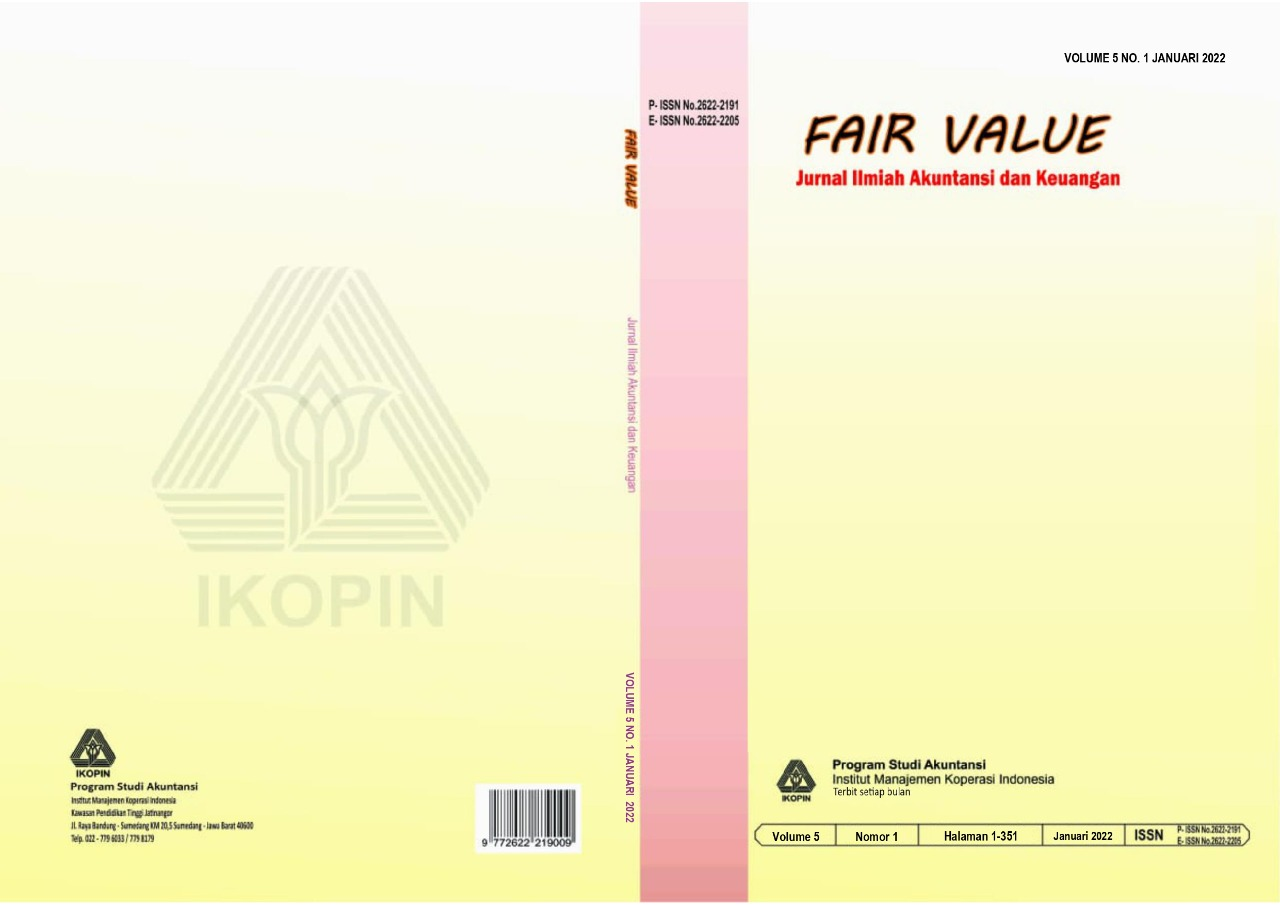Perencanaan keuangan PT. Luxury Indah Jaya “layanan laundry premium”
Main Article Content
Abstract
Business opportunities are very open, of course they must be able to meet the standards required by the hotel industry. To meet these needs, of course laundry services must have very good planning. This research aims to analyze the financial planning of Luxury Laundry with several measurements such as 1) Financial Report Projections (2) Investment Feasibility Analysis (3) Liquidity Ratios (4) Solvency Ratios (5) Profitability Ratios (6) Activity Ratios. The method used in this research is qualitative method. This research is included in descriptive research because this research aims to describe one incident, namely financial planning at Luxury Laundry. The data source in this research is the financial report at PT Luxury Indah Jaya. Then the instruments used to collect data are observation, interview and documentation instruments. The results of this research show that the NPV value of Luxury Laundry is 12,376 with an IRR of 20.32%. In addition, the rate of return on this investment is 3 years and 8 months. From the results of this research, it can be concluded that the Luxury Laundry business is good enough to be realized.
Article Details
References
Alizadeh, P., Tabil, L. G., Mupondwa, E., Li, X., & Cree, D. (2023). Technoeconomic feasibility of bioenergy production from wood sawdust. Energies, 16(4). https://doi.org/10.3390/en16041914
Anna, N., Ridjal, S., & Sjahruddin, H. (2020). Implementasi financial projection sebagai strategi pengelolaan keuangan. Jurnal Ekonomi dan Bisnis Dharma Andalas, 22(2), 302–314. https://doi.org/10.47233/jebd.v22i2.109
David, F. R. (2011). Strategic management : Concepts and cases. In TA - TT - (13th ed). Prentice Hall. https://doi.org/LK - https://worldcat.org/title/457156245
Deng, Z., He, X., Chai, Y., & Wang, T. K. (2023). An investment decision model for underground urban utility tunnel based on mives and real option theory from a sustainable perspective. Sustainability (Switzerland), 15(9). https://doi.org/10.3390/su15097711
Faridhatus Sholihah. (2020). Perputaran modal kerja terhadap profitabilitas. Wadiah, 4(1), 41–60. https://doi.org/10.30762/wadiah.v4i1.3077
Hamid, S. (2022). Manajemen pengelolaan dan pengembangan etika bisnis dalam perusahaan. AkMen Jurnal Ilmiah, 9(4), 587–592. https://e-jurnal.nobel.ac.id/index.php/akmen/article/view/830
Huang, J., Duan, Z., Kwok, J., Binns, S., Vera, L. E., Kim, Y., Szczypka, G., & Emery, S. L. (2019). Vaping versus JUULing: How the extraordinary growth and marketing of JUUL transformed the US retail e-cigarette market. Tobacco Control, 28(2), 146–151. https://doi.org/10.1136/tobaccocontrol-2018-054382
Ichsani, S., Hertina, D., & Effendi, K. A. (2021). The effect of financial ratio on agriculture companies’ solvency. Turkish Journal of Computer and Mathematics Education, 12(8), 110–120. https://turcomat.org/index.php/turkbilmat/article/view/2890
Krasniqi, A., Ahmeti, A., & Ahmeti, S. (2021). The impact of cost control on the profitability of commercial banks. EuroEconomica, 40(1), 52–60. https://dj.univ-danubius.ro/index.php/EE/article/view/786
Lalithchandra, & Rajendhiran. (2021). Liquidity ratio: An important financial metrics. Turkish Journal of Computer and Mathematics Education (TURCOMAT), 12(2), 1113–1114. https://doi.org/10.17762/turcomat.v12i2.1129
Liu, C., Wang, T., Wang, C., Liu, C., Wang, T., & Wang, C. (2021). The impact of annuity reform on teachers ` financial cognition , financial planning and financial behavior. Turkish Journal of Computer and Mathematics Education, 12(11), 4286–4291.
Mulyana, A., Susilawati, E., Putranto, A. H., Arfianty, A., Muangsal, M., Supyan, I. S., Kurniawan, R., Harahap, L. R., & Soegiarto, D. (2023). Manajemen keuangan. Penerbit Widina.
Nalvin, N., Ciamas, E. S., Anggraini, D., & Sutarno, S. (2022). Aspek bisnis dan manajemen resiko studi kasus pada Restoran Syukur Vegetarian, Medan. ESCAF, 1(1), 365–371. https://semnas.univbinainsan.ac.id/index.php/escaf/article/view/268
Nugrahayu, E. R., & Retnani, E. D. (2015). Penerapan metode balanced scorecard sebagai tolok ukur pengukuran kinerja perusahaan. Jurnal Ilmu & Riset Akuntansi, 4(10), 1–16. http://jurnalmahasiswa.stiesia.ac.id/index.php/jira/article/view/3225
OSHO, A. E., & OMOLE, M. O. (2022). Financial strength, financial performance and firm’s value in multinational companies in Nigeria. The Journal of Economic Research & Business Administration, 142(4), 47–58. https://doi.org/10.26577/be.2022.v142.i4.010
Rahmani, S. A., & Mauluddi, H. A. (2020). Analisis kinerja keuangan perusahaan dengan menggunakan du pont system. Journal of Applied Islamic Economics and Finance, 1(1), 225–232. https://doi.org/10.35313/jaief.v1i1.167
Yanto, M. (2020). Penerapan Cost – Volume – Profit (CVP) sebagai dasar perencanaan laba pada CV. Usaha Bersama Tanjungpinang. Jurnal Dimensi, 9(2), 369–386. https://doi.org/10.33373/dms.v9i2.2547

